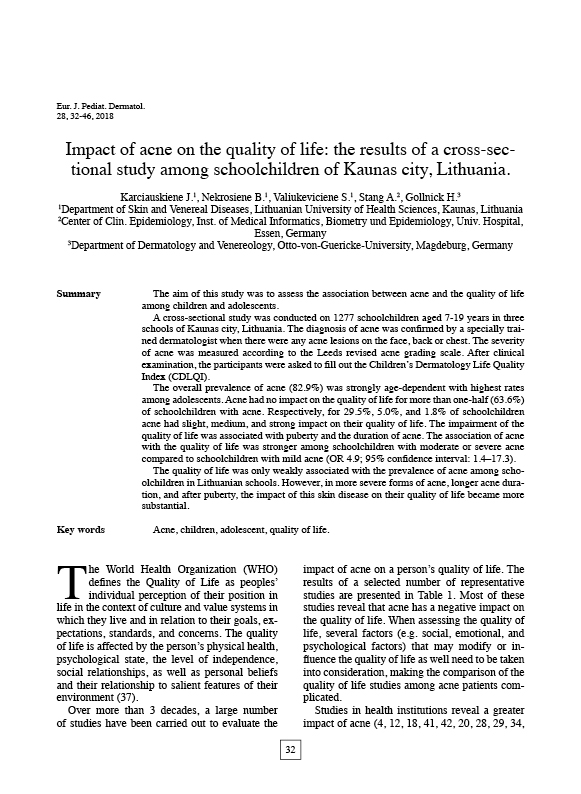Impact of acne on the quality of life: the results of a cross-sectional study among schoolchildren of Kaunas city, Lithuania.

Downloads
DOI:
https://doi.org/10.26326/2281-9649.28.1.1643How to Cite
Abstract
The aim of this study was to assess the association between acne and the quality of life among children and adolescents.
A cross-sectional study was conducted on 1277 schoolchildren aged 7-19 years in three schools of Kaunas city, Lithuania. The diagnosis of acne was confirmed by a specially trained dermatologist when there were any acne lesions on the face, back or chest. The severity of acne was measured according to the Leeds revised acne grading scale. After clinical examination, the participants were asked to fill out the Children’s Dermatology Life Quality Index (CDLQI).
The overall prevalence of acne (82.9%) was strongly age-dependent with highest rates among adolescents. Acne had no impact on the quality of life for more than one-half (63.6%) of schoolchildren with acne. Respectively, for 29.5%, 5.0%, and 1.8% of schoolchildren acne had slight, medium, and strong impact on their quality of life. The impairment of the quality of life was associated with puberty and the duration of acne. The association of acne with the quality of life was stronger among schoolchildren with moderate or severe acne compared to schoolchildren with mild acne (OR 4.9; 95% confidence interval: 1.4–17.3).
The quality of life was only weakly associated with the prevalence of acne among schoolchildren in Lithuanian schools. However, in more severe forms of acne, longer acne duration, and after puberty, the impact of this skin disease on their quality of life became more substantial.
